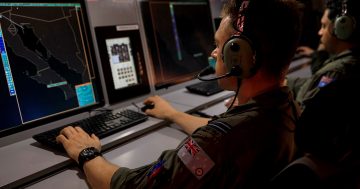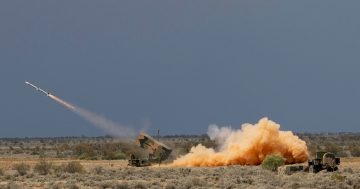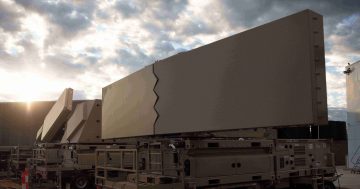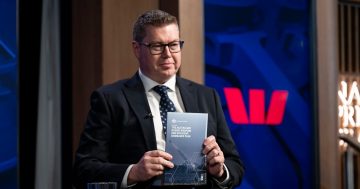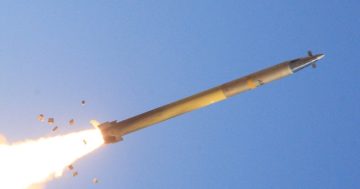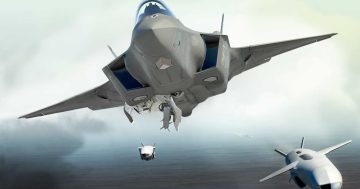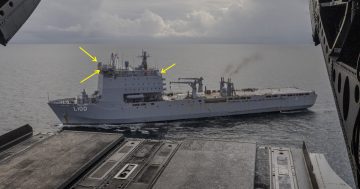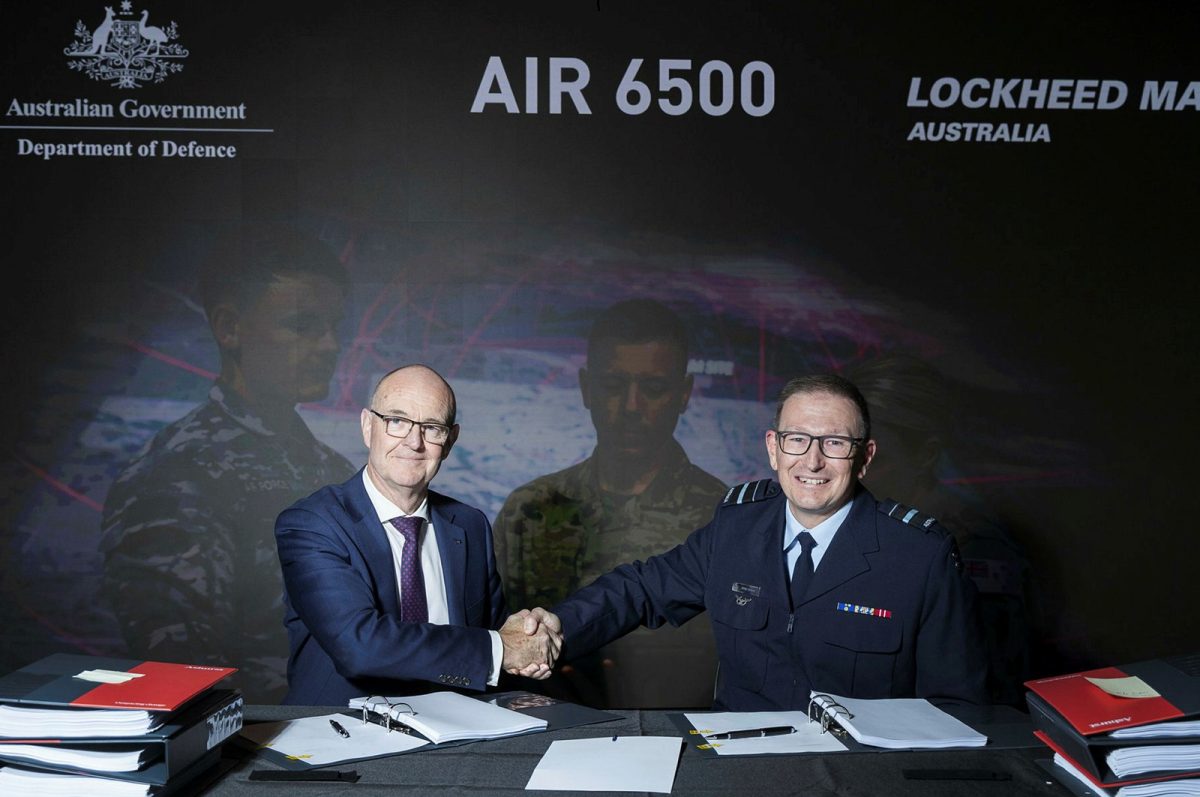
Lockheed Martin Australia CE Warren McDonald and Head of Air Defence and Space Systems Division, Air Vice-Marshal David Scheul, at the JABMS contract signature at RAAF Williamtown. Photo: LMA/Hilary Wardhaugh Photography.
The Commonwealth and Lockheed Martin Australia (LMA) have signed a $500 million contract to build the Australian Defence Force’s Joint Air Battle Management System (JABMS) under Project AIR 6500 Phase 1.
The contract signature comes just eight months after LMA was selected to provide the JABMS over a bid by Northrop Grumman Australia.
JABMS is the key element of the ADF’s future Integrated Air and Missile Defence (IAMD) system, and will be integrated with ADF command and control elements to provide a coordinated IAMD capability across the ADF wherever it is operating.
The main sensors feeding into JABMS will be four advanced ground-based air defence radars supplied by Canberra-based CEA Technologies.
The system will also take data from other air defence systems such as the Australian Army’s short-range ground-based air defence (SRGBAD) system currently being delivered under Project LAND 19 Phase 7B, and the future Project AIR 6502 medium-range ground-based air defence (MRGBAD) system.
Other systems such as the Royal Australian Air Force’s E-7A Wedgetail airborne command and control aircraft, F-35A and EA-18G Growler combat aircraft, and TPS-77 ground-based radars, the Royal Australian Navy’s ship-borne SPY-1D sensors and Aegis combat systems, space-based systems, and even civilian air traffic control radars will also be able to plug into JABMS to provide a complete IAMD picture.
LMA’s solution for AIR 6500 Phase 1 was developed in Australia in partnership with several primes, including Leidos Australia, Boeing and Raytheon, and Australian small-to-medium enterprises including Silentium Defence, Consilium Technology, Consunet, Applied AI, C4i, Lucid Consulting Engineering and Canberra-based cyber technology company Penten.
The eight-year strategic partnership between the Commonwealth and LMA will generate more than 230 new jobs in Adelaide, Williamtown near Newcastle, and Canberra, with career opportunities including high-value STEM roles such as engineering, software development, cyber, and project management.
LMA is also investing in the establishment of a National Integrated Air and Missile Defence Ecosystem to support Defence.
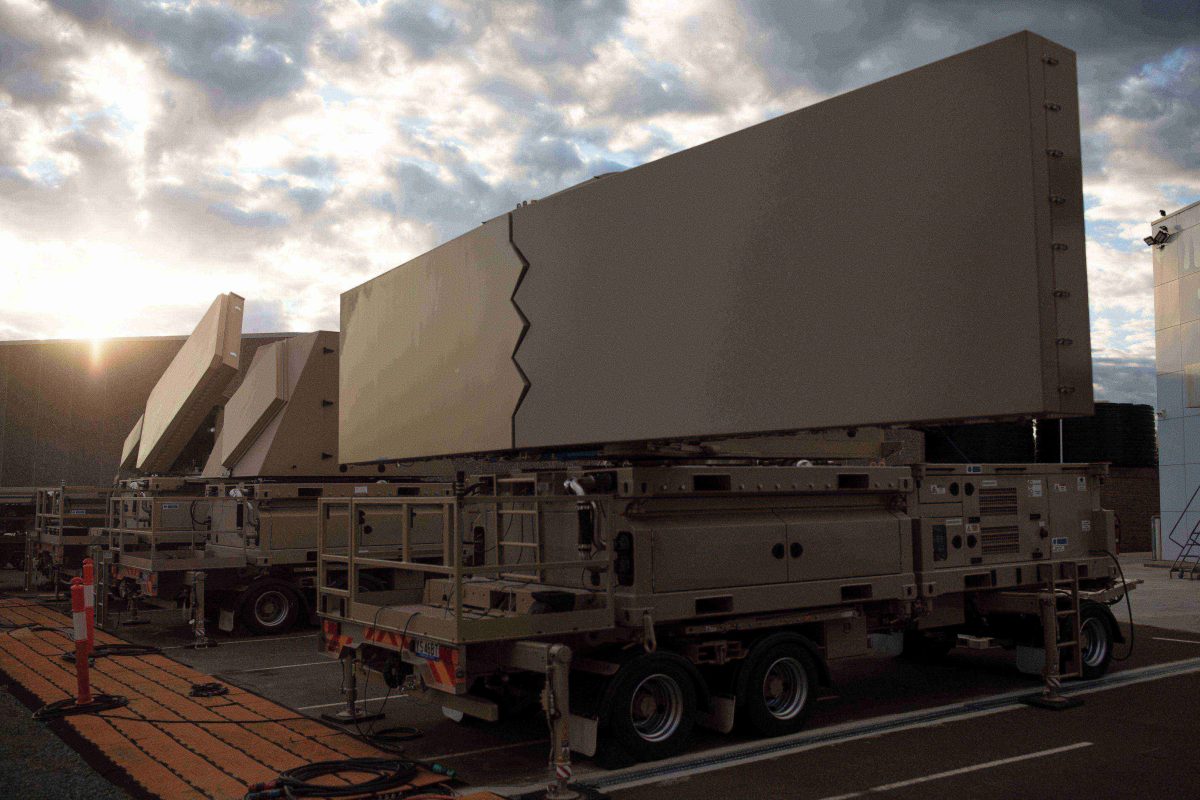
Four advanced phased-array radars from Canberra-based CEA Technologies will be a primary source of data for the JABMS. Photo: ADF.
Lockheed Martin’s vice-president, C4ISR, Lockheed Martin Rotary and Mission Systems Erika Marshall said the company was honoured to be the ADF’s strategic partner and lead the delivery of AIR 6500 Phase 1.
“Together with the Department of Defence, we are harnessing the ingenuity found in Australian small-to-medium enterprises, industry primes and academia to build a transformational capability that will establish Australia’s Defence Force as one of the most highly advanced in the world,” she said.
Lockheed Martin Australia and New Zealand chief executive Warren McDonald added: “AIR 6500 Phase 1 will give Australia and our allies a greater level of connectivity and interoperability to counter current and future air and missile threats.
“In a contested and fast-moving environment, AIR 6500 Phase 1 will give decision makers more time to consider and respond to a situation – time in these circumstances is a precious commodity.”
Defence Industry Minister Pat Conroy said the contract continued the government’s work on next-generation air missile defence.
“It is a further demonstration of our unwavering commitment to strengthen national security and provide the Australian Defence Force with the capabilities it needs to make Australians safer,” he said.
“This is an investment in our national security but also an investment in a future made in Australia, which will support local businesses and create hundreds of jobs and support many more.”


